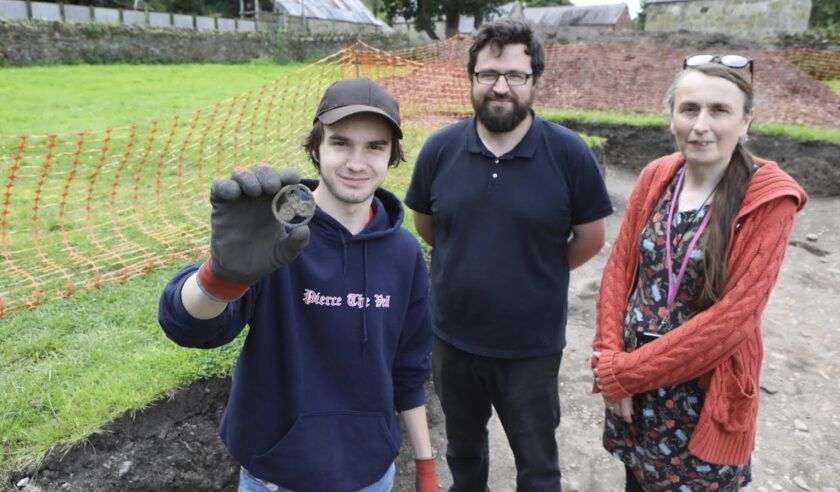A remarkable archaeological discovery in Flintshire has unearthed a 2,000-year-old Iron Age horse bridle mount, offering a fascinating glimpse into the region's history. The artefact was uncovered during an excavation at Greenfield Valley Heritage Park, funded by the UK Government's Shared Prosperity Fund.
The bridle mount, found within the remains of a newly identified settlement, is believed to have belonged to the Deceangli tribe, a Celtic group who inhabited the area between the River Conwy and regions including Denbighshire, Flintshire, and Wrexham. The tribe was known for its rich lead and silver deposits, which were highly valued by the Romans.
Chris Matthews, senior project archaeologist for Heneb, the Trust for Welsh Archaeology, led the three-week excavation at Basingwerk, overseeing a team of 40 archaeologists. The dig unearthed a wealth of historical treasures, including pottery fragments, a hearth, and rows of postholes, revealing the settlement's evolution across multiple historical periods.
"It is a really big piece of the puzzle that will help us fill in a lot of gaps in our knowledge," said Chris, highlighting the significance of the find. "When there are gaps, we make presumptions, but this will help us build a clearer picture of some of the most elusive chapters of our past."
The discovery has also shed light on the intriguing relationship between the Deceangli and the Romans. The presence of both Iron Age and Roman-era artefacts suggests a possible collaboration between the two cultures rather than outright conquest. Chris theorises that the Romans may have partnered with the Deceangli to establish a thriving lead and silver industry, contributing to the expansion of Roman rule in Britain.
The diverse range of pottery discovered alongside the bridle mount indicates the settlement's residents were affluent and likely engaged in direct trade with the Roman legions. Moreover, the settlement's activity coincided with the early construction of Chester, further supporting the theory of a cooperative relationship between the Deceangli and the Romans.
The bridle mount was discovered by Edward Whitby, a 17-year-old aspiring archaeologist from Bagillt. "It was amazing. I was cleaning back and from under the mud a glint of green caught my eye," he shared. Mistaking the artefact for a ring initially, he quickly realised its importance. "Iâm over the moon to have found it; I was shaking. Itâs so exciting as it is so different to the ordinary."
This year's excavation follows a similar UKSPF-funded dig in 2023, which unearthed a 10th-century Viking strap buckle. Brenda Harvey, chair of the Greenfield Valley Trust, expressed enthusiasm for the ongoing discoveries, stating, "The excavations over the past two years have been thrilling. The Valley has a complex and fascinating history, and these findings add a new phase to our story. This is exciting for the local community as well as the experts and will help us attract more visitors."
Councillor David Healey, Flintshire County Council cabinet member for climate change and economy, echoed the sentiment, highlighting the impact of the UK Shared Prosperity Fund. "This is a perfect example of the impact of the UK Shared Prosperity Fund," he said. "With the funding support, the history of Flintshire has been enriched and provided Greenfield Valley with the opportunity to increase visitor footfall as a result of improved talks and exhibitions."
The discovery of the 2,000-year-old bridle mount is a testament to the rich history of Flintshire and the value of archaeological investigation. This significant find is sure to attract further research and interest, illuminating a fascinating chapter of local history and the complex relationship between the Deceangli and the Roman Empire.
Article
Entertainment

2,000-Year-Old Bridle Mount Unearthed in Flintshire: A Glimpse into Iron Age and Roman History

